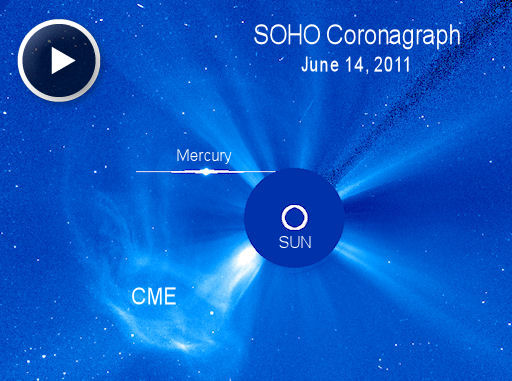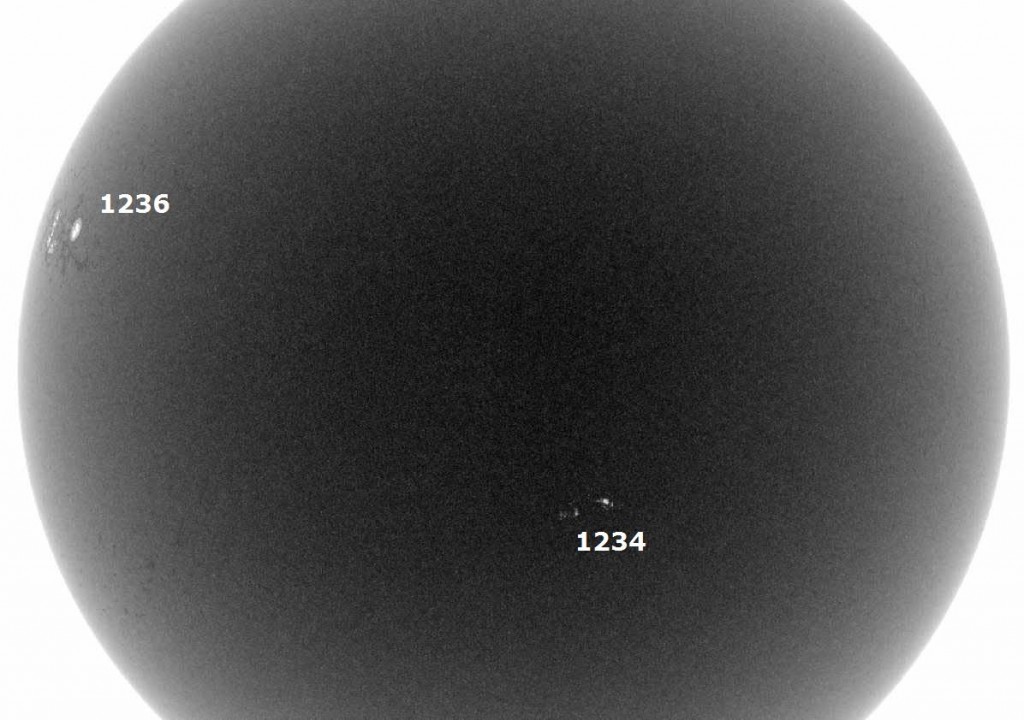M1.3 solar flare produced, CME expected on June 17

On June 14th around 08:10 UTC, a magnetic filament near the sun's eastern limb became unstable and erupted. The resulting blast hurled a bright and massive CME into space.
The expanding cloud was observed by 3 spacecraft: STEREO-A, STEREO-B and SOHO. Researchers at the Goddard Space Flight Center's Space Weather Lab assembled data from the fleet to create a 3-dimensional model of the expanding cloud: movie.
According to their analysis, the cloud blew away from the sun at a speed of 830 km/s and it could deliver a glancing blow to Earth's magnetic field on June 17th at 10:50 UT (plus minus 7 hours). The impact is not expected to provoke strong geomagnetic storming. Nevertheless, high-latitude sky watchers should be alert for auroras when the CME arrives. (SpaceWeather)

An M1.3 Solar Flare took place at 21:47 UTC Tuesday around Sunspot 1236 which is rotating into view on the eastern limb.
Update
A large new sunspot now numbered 1236 is rotating into view on the eastern limb and is producing C-Class flares and has produced one M-Class flare. Stay tuned for further activity.
Existing sunspot 1234 which is located in the southern hemisphere continues to slowly re-expand. Sunspot 1235 in the north has faded once again.
Solar activity was at low levels during the period. New Region 1236 (N17E64) rotated onto the disk as a D-type spot group and produced two low-level C-class events. A north-south oriented filament channel, located near the SE limb, erupted during the period. SDO/AIA 193 imagery revealed material movement along the large channel, first visible at 14/0609Z, and movement continued through about 14/1500Z. Associated with the filament eruption was a partial halo CME off the east limb, first visible in STEREO-Behind COR2 imagery at 14/0810Z. A plane-of-sky velocity was estimated at about 750 km/s. This CME does not appear to be Earth-directed.
The geomagnetic field was at quiet to unsettled levels with an isolated active period observed between 14/0900 – 1200Z. This activity was due to continued effects from a recurrent coronal hole high speed stream. During the period, solar wind velocities rose steadily from near 450 km/s to about 550 km/s. The Bz component of the interplanetary magnetic field varied between +/- 8 nT while Bt varied between 5 and 10 nT. The greater than 10 MeV proton enhancement, present since 11 June, decayed to background levels early on 14 June.
The geomagnetic field is expected to be at quiet to unsettled levels for day one (15 June), with a chance for active levels due to continued high speed stream effects. Activity is expected to decrease to mostly quiet levels on days two and three (16 – 17 June) as high speed stream effects subside.

Commenting rules and guidelines
We value the thoughts and opinions of our readers and welcome healthy discussions on our website. In order to maintain a respectful and positive community, we ask that all commenters follow these rules:
We reserve the right to remove any comments that violate these rules. By commenting on our website, you agree to abide by these guidelines. Thank you for helping to create a positive and welcoming environment for all.